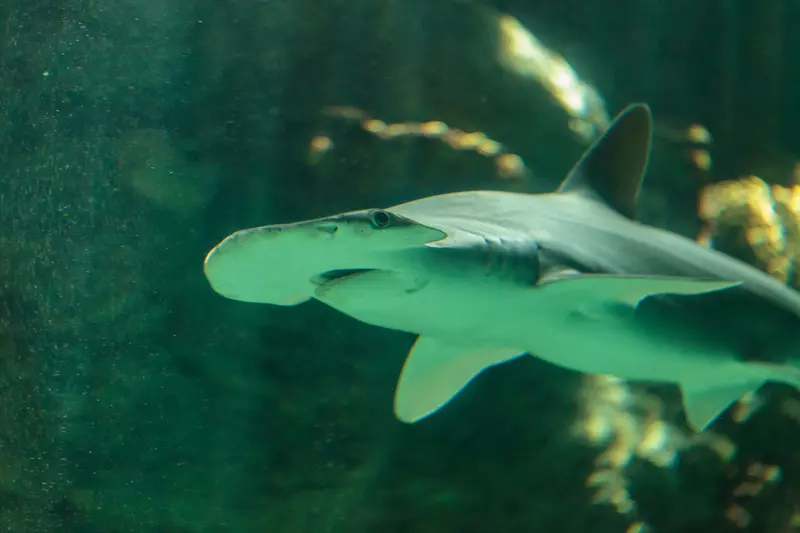[Originally published as Shark Navigation: Magnets?]
Some shark species are well-known long-distance travelers, often covering thousands of miles in what appears to be an effortless fashion. Despite traveling these long distances, it has not been known until recently how sharks could navigate across wide stretches of open ocean and arrive at an exact destination.
While turtles had been known for a while to navigate the open ocean using the earth’s magnetic field, sharks are harder to study than sea turtles, making it hard to determine how they were accomplishing this feat.
The most recent study used bonnethead sharks, a relative of the well-known hammerheads. These bonnetheads come back to the same place every year, and researchers wanted to know how they did it.
Using wild-caught juvenile bonnetheads, the researchers exposed the sharks to magnetic field conditions widely different from where they were found. The research predicted that if the bonnetheads were responding to the magnetic fields, they would orient themselves north when exposed to southern magnetic fields and south when exposed to northern magnetic fields, with no change in orientation if the field was turned off.
Sure enough, the bonnetheads responded as expected if they were sensitive to a magnetic field.
Now it is important to realize that this is only preliminary data. Many more experiments need to be performed to confirm that the bonnetheads use magnetic fields to help them navigate. Further, even if the bonnethead uses magnetic fields, this does not mean that other shark species also do so. The researchers admit this and discuss plans for new experiments, but the early results are promising.
Dr. Bryan Keller, one of the researchers, made the following observation which is particularly apt:
How cool is it that a shark can swim 20,000 kilometers round trip in a three-dimensional ocean and get back to the same site? It really is mind blowing. In a world where people use GPS to navigate almost everywhere, this ability is truly remarkable.
Keep in mind, human GPS generally navigates using roads and requires satellite data and connection to work. Sharks have access to none of this; they do all their navigation internally. Whether it is purely based on magnetic fields, involves ocean currents, or some other factors, doesn’t really matter. Shark navigation being internal requires that they have built-in systems to do so.
The existence of those systems strongly implies they were designed. When we look at human GPS systems, we know without doubt that these things are designed. When we look at sharks, they perform the same complex tasks without human-designed tools. Despite lacking the tools humans use, sharks can get to exactly where they want to get, without much difficulty.
Even as we learn more about how sharks navigate, this knowledge does not tell us where they got the ability to do so.
In other words, just because there is a naturalistic explanation for how they do it today does not mean that there is a naturalistic explanation for how the ability developed. And this is the deeper question we need to be asking.
How did the shark develop its navigation capability? By some process of natural selection?
The problem with a purely selectionist explanation is that selection can only be invoked on existing things. The shark’s navigational system had to exist for selection to operate on it. Selection can fine tune an organism for its environment, but it cannot create new traits.
The only remaining explanation is design. Now, obviously, evolutionists will not like this explanation, but it is the only one available. While some design advocates will not appeal to the Christian God, I certainly will. The only reasonable, rational explanation for the existence of design is the Christian God. But that’s an argument for another time.






